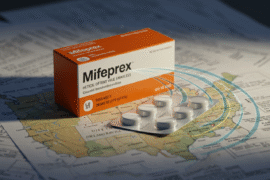This article may contain references to products or services from one or more of our advertisers or partners. We may receive compensation when you click on links to those products or services. Nonetheless, our opinions are our own.
Key Highlights
- Building codes are frequently updated, potentially leaving your property outdated and non-compliant.
- Ordinance and Law Coverage helps cover the costs of bringing your property up to current building codes after a covered loss such as fire or natural disaster.
- It bridges the gap that standard property insurance doesn’t cover, including the demolition of undamaged sections and increased rebuilding costs due to code changes.
- This coverage is essential for older properties and those in areas with frequent code updates.
- Consulting with an insurance professional is recommended to determine the appropriate level of coverage for your specific needs.
Introduction
Property insurance is important for protecting against unexpected events. However, it may not cover all costs for rebuilding after a loss. This is where Ordinance and Law Coverage comes in. It provides extra financial help for expenses that arise from following new building codes. Let’s explore this coverage to understand its value and how it benefits property owners.
Understanding Ordinance and Law Coverage
In property insurance, understanding coverage details is crucial, especially when rebuilding after a covered loss. Most standard policies focus on restoring a property to its previous condition. However, local building codes frequently change, bringing new safety regulations and requirements. These updates can create unexpected financial burdens for property owners.
Defining Ordinance and Law Coverage
Ordinance and Law Coverage is an add-on to a standard property insurance policy. It helps cover costs associated with updating a property to meet current building codes after a covered event.
For example, if a fire or storm damages your property, basic property insurance may cover repairs. However, if new building codes require structural upgrades, electrical rewiring, or additional safety features, standard policies typically won’t cover these extra costs. Ordinance and Law Coverage fills this gap, covering expenses such as:
- Demolishing undamaged portions of the property
- Upgrading electrical, plumbing, or structural systems
- Increased rebuilding costs due to new materials and code compliance
The Importance of Ordinance and Law Coverage for Property Owners
For property owners—especially those with older buildings or commercial spaces—Ordinance and Law Coverage is an essential safeguard. Building codes evolve over time, making older structures vulnerable to non-compliance issues.
When a disaster occurs, rebuilding to meet current standards can lead to significant, unexpected expenses. This coverage guarantees that property owners won’t bear the financial burden of these mandatory upgrades.
Additionally, Ordinance and Law Coverage provides peace of mind, knowing that if a covered loss occurs, the property can be restored while complying with updated legal requirements.
Preparing for Ordinance and Law Coverage
Getting ordinance and law coverage requires careful preparation to ensure comprehensive protection. Property owners should assess their needs based on location, building type, and age. Gathering necessary documentation can also streamline the insurance application process.
Identifying Your Coverage Needs
- Assess Your Property’s Risk: Evaluate factors such as the building’s age, location, and structural condition. Properties in disaster-prone areas or locations with strict building codes may have higher risks.
- Determine Coverage Limits: Speak with an insurance provider to understand available coverage limits. Selecting an appropriate limit ensures adequate financial protection against code upgrade costs.
- Understand Coverage Types: Ordinance and Law Coverage may include provisions for debris removal, demolition, and higher reconstruction expenses. Review these options to tailor your policy to your needs.
Gathering Necessary Documentation and Resources
To simplify the process of obtaining Ordinance and Law Coverage, gather the following documents:
- Current Property Insurance Policy: Reviewing your existing policy helps identify gaps in coverage.
- Recent Property Appraisal: Establishes the value of the property and helps determine appropriate coverage limits.
- Renovation and Upgrade Records: Keeps track of past improvements and permits, demonstrating compliance with prior building codes.
These documents provide insurers with a clear understanding of your property’s condition, making it easier to obtain accurate coverage.
A Beginner’s Guide to Obtaining Ordinance and Law Coverage
Obtaining ordinance and law coverage is a straightforward process. Following these steps ensures you receive the right protection for your property.
Step 1: Evaluating Your Current Insurance Policy
Start by carefully reviewing your existing homeowners or commercial property insurance policy. Pay close attention to:
- Building Coverage: Ensure the policy covers the full cost of rebuilding your property, including labor and material price changes.
- Ordinance and Law Coverage: Check if your policy already includes this coverage and, if so, what the coverage limit is.
- Exclusions: Identify any exclusions or limitations related to code upgrades, ordinances, or law provisions.
Step 2: Consulting with an Insurance Professional
Once you’ve reviewed your policy, speak with an insurance provider or agent. An expert can assess your property’s risk factors and suggest coverage options based on your needs.
Insurance professionals can also help:
- Explain different Ordinance and Law Coverage options
- Recommend appropriate coverage limits
- Assist in adding an endorsement to your current policy or obtaining standalone coverage
Conclusion
Understanding Ordinance and Law Coverage is crucial for property owners looking to protect against unforeseen rebuilding costs due to changing codes. By assessing coverage needs, consulting insurance professionals, and gathering necessary documents, property owners can ensure they have the right financial protection.
Whether you own a home or a commercial building, this coverage helps safeguard your investment, ensuring compliance with modern building codes. If you’re unsure whether your current policy includes adequate protection, consult an expert today.
Frequently Asked Questions
What properties require ordinance and law coverage?
While all property owners can benefit from this coverage, it is especially important for commercial properties and older homes that may not meet updated building codes.
How does Ordinance and Law Coverage benefit homeowners?
This coverage helps homeowners cover the additional costs of updating their homes to meet current building codes after a covered loss. It also provides financial assistance for demolishing undamaged portions of a building if required by law.
Are there different types of ordinance and law coverage?
Yes, this coverage may include:
- Demolition coverage: Pays for tearing down undamaged portions of a building if required.
- Increased cost of construction coverage: Covers additional rebuilding expenses due to code compliance.
- Loss of value coverage: Compensates for the reduced property value due to compliance requirements.
Can I add Ordinance and Law Coverage to an existing policy?
Yes, many insurers offer this coverage as an add-on endorsement. Contact your insurance provider to discuss adding it to your existing policy.
How do I file a claim under Ordinance and Law Coverage?
If your property suffers a covered loss requiring code upgrades, notify your insurance provider immediately. Provide necessary documentation, including photos, damage assessments, and permit requirements. Your insurer will guide you through the claims process and determine the applicable coverage.

Reviewed and edited by Albert Fang.
See a typo or want to suggest an edit/revision to the content? Use the contact us form to provide feedback.
At FangWallet, we value editorial integrity and open collaboration in curating quality content for readers to enjoy. Much appreciated for the assist.
Did you like our article and find it insightful? We encourage sharing the article link with family and friends to benefit as well - better yet, sharing on social media. Thank you for the support! 🍉
Article Title: Ordinance and Law Coverage: Protecting Your Property from Costly Code Upgrades
https://fangwallet.com/2025/02/14/ordinance-and-law-coverage/The FangWallet Promise
FangWallet is an editorially independent resource - founded on breaking down challenging financial concepts for anyone to understand since 2014. While we adhere to editorial integrity, note that this post may contain references to products from our partners.
The FangWallet promise is always to have your best interest in mind and be transparent and honest about the financial picture.
Become an Insider

Subscribe to get a free daily budget planner printable to help get your money on track!
Make passive money the right way. No spam.
Editorial Disclaimer: The editorial content on this page is not provided by any of the companies mentioned. The opinions expressed here are the author's alone.
The content of this website is for informational purposes only and does not represent investment advice, or an offer or solicitation to buy or sell any security, investment, or product. Investors are encouraged to do their own due diligence, and, if necessary, consult professional advising before making any investment decisions. Investing involves a high degree of risk, and financial losses may occur including the potential loss of principal.
Source Citation References:
+ Inspo












































